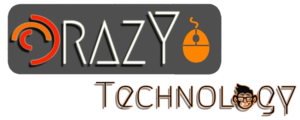Robotic Process Automation
Robotic Process Automation isn’t just about robots. It is a lot more about the automation of processes than anything else. Before computers, most processes involved some human intervention. Humans ran even manufacturing machines, and large-scale manufacturing employs thousands of people.
However, since computers have taken over most processes, manufacturing hasn’t been left untouched either. All domains, be it manufacturing or information technology, now involve some automation in their processes. The amount of human intervention in these processes is only reducing, and this trend is likely to continue for the foreseeable future.
Jobs in robotic process automation typically involve a significant amount of coding knowledge. You would typically need to write code that would enable computerized or non-computerized processes to be done automatically without human intervention.
These processes could mean anything from automatic email replies to automated data analysis and automatic processing and financial transactions approval. Robotic process automation makes tasks considerably faster for the common consumer by making such approvals automatic based on certain conditions entered by the programmer.
In sectors such as financial services, robotic process automation can reduce the lean time to approve financial transactions online. It improves the productivity of the company as a whole, as well as that of its clients.
Virtual Reality and Augmented Reality

Virtual Reality and Augmented Reality have both been technology buzzwords for over a decade now. However, these top technology trends have so far failed to materialise into widely available consumer products. The presence of virtual reality and augmented reality in our real lives is minimal. Eventhough VR and AR have been familiar in the industry, they are relatively new technologies in 2021.
Virtual reality has been used widely in video games thus far and augmented reality-based apps did become popular for a while a few years ago, before waning. However, the best way virtual reality can become a top technology trend for the future is by making it a part of people’s daily lives.
Over the past few years, virtual reality has also begun to find applications in training programs. Another domain where virtual reality experiences have been useful is in providing experiences to museum-goers. The trajectory of the rise of virtual reality is very similar to that of 3D technology—it might take just one application, such as cinema in 3D, for the technology to become mainstream. According to Payscale, average salary of AR Engineer is above 6 lakhs per annum, one more reason to give this new technology a try in 2021.
Virtual reality jobs do not currently require a lot of training. Simple programming skills should be enough to land you a job, alongside an interest in the field and the power of visualisation. With millions of virtual reality devices being sold worldwide every year, it is only a matter of time before we see VR and AR take over our daily lives.
Blockchain

You have probably heard of Blockchain in the past few years, mostly in the context of cryptocurrency. However, Blockchain has grown to have several different applications. The significant part about Blockchain is that it is never under the complete control of a single entity due to being entirely consensus-driven. It can never change the data you store in the Blockchain used widely in sharing medical data in the healthcare industry.
Due to the security that Blockchain provides, this data can be shared among parties pretty much seamlessly. Another application of Blockchain is in maintaining the integrity of payment systems. Blockchain-based payment systems are currently highly immune to external attacks and theft. Blockchain can also be used in tracking the status of products in a supply chain in real-time.
The number of blockchain jobs has unexpectedly increased in the past few years and continues to increase. However, the number of applicants for such positions has also been growing in tandem. To bag a job in the blockchain domain, you need experience in multiple programming languages and in-depth knowledge of data structure and algorithms, OOPS, relational database management systems, and app development.
Artificial Intelligence and Machine Learning

Artificial intelligence and machine learning once represented the cutting edge of computer science. When these technologies were created in the last 20th century, they hardly had any applications and were, in fact, mostly academic. However, these technologies have gained applications over the years and reached ordinary people’s hands through their mobile phones.
Machine learning represents a computer science field in which an algorithm can predict future data based on previously generated data. Artificial intelligence represents the next step in machine learning, in which an algorithm develops data-based intelligence and can even carry out essential tasks on its own.
Both artificial intelligence and machine learning requires advanced knowledge of statistics. Statistics help you determine the results that your algorithm might throw up for a particular dataset, thus evolving it further. The proliferation of machine learning applications has meant that the number of jobs in this field has also grown.
Machine learning is among the leading technologies of this century. A career in this domain can expose you to advanced computational infrastructure and novel research in the field making this a fine new technology in 2021 you should consider getting into. Having a job in machine learning and artificial intelligence domain(s) places you at the forefront of technological development in the field of computer science.














